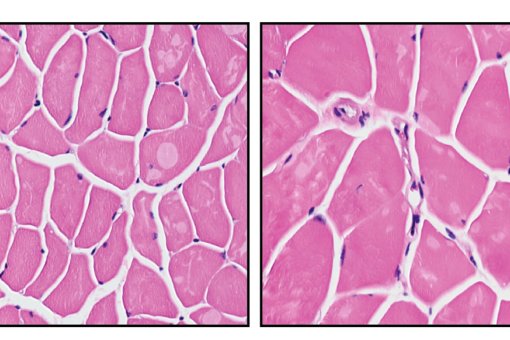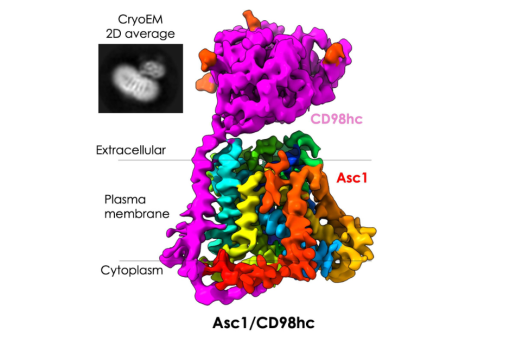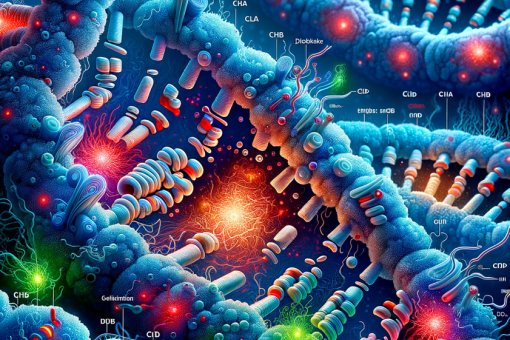Images
Contact

Thanks to a collaborative work between developmental biologists and scientists specialized in mathematical models.
Specifically, a study of wing formation in Drosophila, led by the researchers Marco Milán, from the Institute for Research in Biomedicine (IRB Barcelona), and Javier Buceta, from the Centre for Research in Theoretical Chemistry (CeRQT), both located within the Barcelona Science Park (PCB), has led to the discovery of a new genetic function involved in this process, and furthers our understanding of the internal laws which regulate it. The article is published in the July 11, 2007, issue of the journal PLoS One.
The development of a living being is based on general laws written into the genetic code of each cell and which enable them to develop a specialist function, modifying the way they divide, their form and their behaviour. These changes are coordinated through a series of instructions that must be correctly interpreted within the cell, and this means that the information must pass along a pathway of signalling molecules. These pathways have been conserved across evolution, and therefore studies using models such as the fruit fly provide information about these same processes in humans and other animals.
The Developmental Biology of Drosophila Group from the IRB Barcelona, led by Marco Milán, studies the signals that guide wing development in Drosophila. The wings are generated from a set of cells grouped into different segments or compartments that never mix with one another, and which enable the symmetrical construction of the dorsal and ventral parts starting from a given limit or border. This process of subdivision into compartments also takes place during the formation of the vertebrate central nervous system, and the genes and signalling pathways involved are conserved in both Drosophila and vertebrate species.
Although biologists already had an intuitive idea of how the limit or border between these compartments was generated, there had been no systematic study taking into account all the relevant elements. Therefore, and with the backing of a group from the CeQRT of the PCB, led by Javier Buceta, they decided to turn to mathematical modelling as a way of understanding better the internal mechanisms which regulated this process. In this way they identified certain interactions in the signalling pathways that brought to light a number of contradictions and showed that a key step was missing in their model. As Milán explains: “Thanks to this computer simulation we have found a new genetic function that ensures the stability of the system and has enabled us to test its robustness. This study shows that modelling is a highly useful tool for describing in silico new properties of a biological system and being able to corroborate them subsequently in vivo”.
In this regard, Buceta, who leads a group dedicated to modelling biological processes (the SiMBioSys) in the CeRQT, explains that “the advantage of these modelling techniques is that they can simulate genetic and cell interactions as a set of mathematical equations and, therefore, to determine the feasibility of a biological mechanism”. In order to study the stability of the system they conducted around 45,000 different in silico experiments, introducing variations in twenty parameters. The results have enabled them to identify the most important system parameters and showed that the biological mechanism maintained its functionality in 91% of the cases analyzed. According to Milán and Buceta “this study confirms the hypothesis that if this gene network has been maintained across evolution in both vertebrates and insects, it is precisely because it is highly stable and robust”.
Reference Article
Robustness and Stability of the Gene Regulatory Network Involved in DV Boundary Formation in the Drosophila Wing
Javier Buceta, Héctor Herranz, Oriol Canela-Xandri, Ramon Reigada, Francesc Sagués, and Marco Milán
PLoS One, 2007, doi 10.1371/journal.pone.0000602
IRB Barcelona
L’Institut de Recerca Biomèdica (IRB Barcelona) treballa per aconseguir una vida lliure de malalties. Desenvolupa una recerca multidisciplinària d’excel·lència per curar el càncer i altres malalties vinculades a l'envelliment. Treballa establint col·laboracions amb la indústria farmacèutica i els principals hospitals per fer arribar els resultats de la recerca a la societat a través de la transferència de tecnologia, i du a terme diferents iniciatives de divulgació científica per mantenir un diàleg obert amb la ciutadania. L’IRB Barcelona és un centre internacional que acull al voltant de 400 investigadors de més de 30 nacionalitats. Reconegut com a Centre d'Excel·lència Severo Ochoa des de 2011, és un centre CERCA i membre del Barcelona Institute of Science and Technology (BIST).



